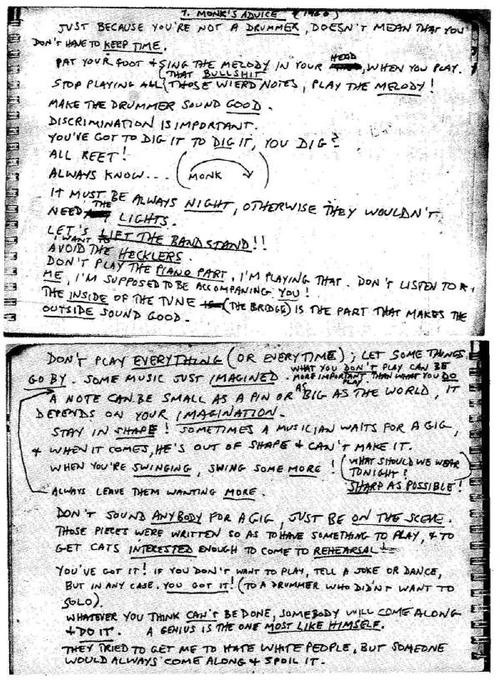-
Extremely Loud and Incredibly Close
Amazingly imaginative
This is the story of Oskar Schell, a young boy who is on a quest around New York City, attempting to solve a mystery left in the wake of his father’s death in the 9/11 attacks. The story is told in the form of narratives, letters, and journal entries from the perspective of three individuals, and their interwoven stories are revealed expertly in parallel. The book works as a scrapbook, with the reader discovering elements from the story appearing on the pages, as though they had been pasted in.
The best part of this book is the people you meet, and the stories they tell. Oskar meets a great number of people around the city, and each offers a delightful kernel of his or her life. Alongside these quick glimpses are stories and asides presented by the major characters, not necessarily relevant but always illuminating. Every anecdote is a gem that begs to be savored, and I often found myself setting down the book so I could digest.
This, I believe, is my absolute favorite book. I recommend it to everybody. Written by Jonathan Safran Foer, I believe it to be far superior to Everything is Illuminated.
-
Samasource Selected for fbFund REV
Hooray! Along with 18 companies and one other non-profit, Samasource was chosen to participate in fbFund’s incubator program this summer. Check out the full list of winners on VentureBeat or InsideFacebook.
What this means is that we’ll have Palo Alto office space, lots of media attention, an official Facebook seal of approval, and possibly free lunches /crossfingers. The catch?
-
Meals as a Social Activity
Today I ate dinner alone. I think there is nothing wrong with that, but you just don’t see people alone in restaurants all that often (Aren’t you going to be bored? Do you want a magazine or something?). Eating meals, in most cultures everywhere, is regarded as a social activity. I would like to explore why, and have a few hypotheses.
Everybody has to do it. Three times a day, nearly everybody will eat food at roughly the same time. People share this activity, and so it makes sense for that time to be designated for social interaction. If everybody had tea at 3, or went to the gym at 4, then those would just as strongly be considered a social activity.
We are forced to sit down. In our busy lives, we are either doing something or are on our way elsewhere to do something. We need to eat though, and eating takes a few minutes, so we take a break and sit down. Meals become social times because they are the only times when social interaction is reliably possible.
-
Is that a Cigarette or a Lollipop?
I saw a girl at a bus stop who appeared to have a cigarette in her mouth. “Yuck,” I thought. Then, I realized it was a lollipop. I immediately wanted to become her friend.
You see, there is something special about lollipops. As far as your mouth is concerned, you could just as well be eating a normal hard candy. But the stick makes a world’s difference. You are proclaiming to the world, “I am enjoying a candy.” There is no way to be inconspicuous about eating a lollipop. You have committed to this act, and do so with no shame.
And anybody who feels such passion for candy is all right in my book.
-
Gravity Summit Stanford: Wrap-up
Tuesday, May 5th was Gravity Summit’s “Social Media Marketing for Business” at Stanford. I’ve known Rodney Rumford since Joachim and I made Graffiti for Facebook, and he was kind enough to save me a spot.
The focus of the talks was very much aimed towards large businesses; presentations were given by such notable people as Bob Pearson of Dell, Inc. and Charles Miller from DIRECTV. That said, it seemed there were plenty of small business owners attending, and many of the points were generalizable. The main idea is:
Social Media is conversation. When a business or individual understands this, they can do great things.
Bob Pearson pointed out that “the majority of customers don’t call you.” Businesses have largely been detached from consumers, interacting only when the customer pursues a purchase. This no longer should be the case, as businesses now have the tools to actively engage in conversation with their customers and meet them halfway.
Social Media brings conversations into the open, and allows businesses to be aware of what people are saying. They then need to actively engage in these conversations and be involved in the dialogue. In doing so, businesses will learn more about the community and share more about themselves. In short, they must learn to be transparent.
-
Becoming a Better Writer
I just ordered Strunk & White’s “The Elements of Style,” 50th anniversary edition. I don’t have the book yet, but the purchase inspired me to pay more attention to writing. Hopefully this can be someplace where I can practice writing, incorporating new ideas and polishing my prose. No high hopes yet, as I don’t often continue such things for long, but we’ll see how it goes :)
-
Dinner for 2
I was at a restaurant last night and saw a couple having dinner together. At a few points, the guy was texting on his phone and the girl was looking really bored. Boo on him.
And then once he finished he left his phone sitting open on the table. I guess he was expecting replies? Maybe that sort of thing is commonplace now, but I still think it’s rude.
-
Original iChat UI
It's always exciting to see original prototypes of good products. Not to mention the sample conversation going on in there is rather delightful.
-
A Boy Named Sue, and a Theory of Names
What will you name your child?
